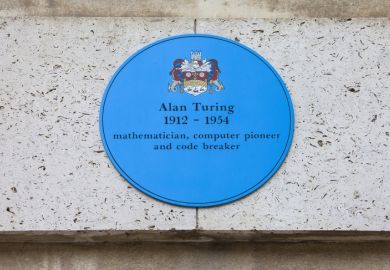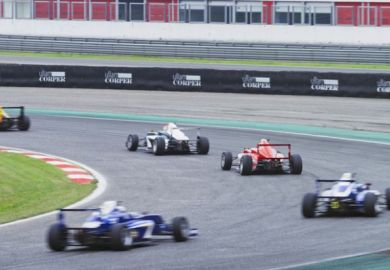The apparatus of knowledge items from an ‘evocative historic space’
A pioneering but long-abandoned laboratory has been brought back to life in an evocative new exhibition at King’s College London.
Plant Science is part of a wider series of projects instigated by Alan Read, professor of theatre at King’s. When he joined the college five years ago, it had no theatre and so he created the interdisciplinary Performance Foundation to explore ways that performance is central to fields such as medicine and law.
He was involved in the project to restore the anatomy theatre and museum at King’s, and he secured support from the Higher Education Innovation Fund for “The 7 generations of performance”, an audit of the college’s different past and present campuses.
Professor Read said he was acutely aware of “the legacy of evocative historic spaces that could be celebrated”. A particularly striking example was the Plant Science lab at 68 Half Moon Lane in Herne Hill, south London, where Nobel laureate Sir James Black, who died in 2010, spent what he described as the “intellectually most productive” period of his life.
Opened in 1969 in a building that was never completed, it was abandoned 12 years ago and is now being disposed of. The artistic partnership of Ewan Forster and Christopher Heighes - both creative research fellows at the University of Roehampton - was invited to take a look and to use what they found as the basis for a site-specific work.
When they first visited Half Moon Lane, recalled Mr Forster, “it still looked as if people had just walked out and there was a single caretaker keeping the building on life support”. Some of the many awards certificates and Perspex trophies won by Sir James were still there, along with three glasshouses and a small surviving colony of Chilean cacti and moss.
The lab benches and soap dispensers, glassware drying racks and postal cages, toxic cabinets and fire buckets have now been reassembled on King’s main campus in the Strand, displayed as if for an auction of “fine mid- and late-twentieth century scientific and teaching apparatus”.
They can be viewed in the Inigo Rooms, which Alison Duthie, director of programming at the King’s Cultural Institute, described as “dedicated public-facing spaces…where we focus on partnerships between artists and academic practice”. She hoped that Plant Science would generate fresh interest in “the abandoned corridors, cold stores, growth rooms and glasshouses of this site of scientific teaching and Nobel-prizewinning research”.
Looking back, in Professor Read’s view, can also help us address to the challenges of the future. “All disciplines incorporate practices that have to be abandoned as they move forward,” he explained, “but they also need to be explored and recognised so that we don’t reinvent the wheel.”
Plant Science takes place at the Inigo Rooms, Somerset House East Wing, KCL Strand Campus, until 11 June.
Register to continue
Why register?
- Registration is free and only takes a moment
- Once registered, you can read 3 articles a month
- Sign up for our newsletter
Subscribe
Or subscribe for unlimited access to:
- Unlimited access to news, views, insights & reviews
- Digital editions
- Digital access to THE’s university and college rankings analysis
Already registered or a current subscriber? Login




